A Guide to Dieng Plateau – Of Ancient Temples and Natural Wonders
While planning our Java trip, I stumbled upon the mesmerising Dieng Plateau. Unlike the familiar scenes of Java, Dieng stood out with its terraced potato fields, ancient temples, shimmering lakes, and steaming volcanic craters. But that’s not all – Dieng Plateau also boasts a balmy climate, grand panoramas, and stunning landscapes. What sealed the deal for us was the ease of making it a day trip from Yogyakarta.
In this article, we will delve into the details of how you can experience the very best of this spectacular volcanic highland in Central Java.
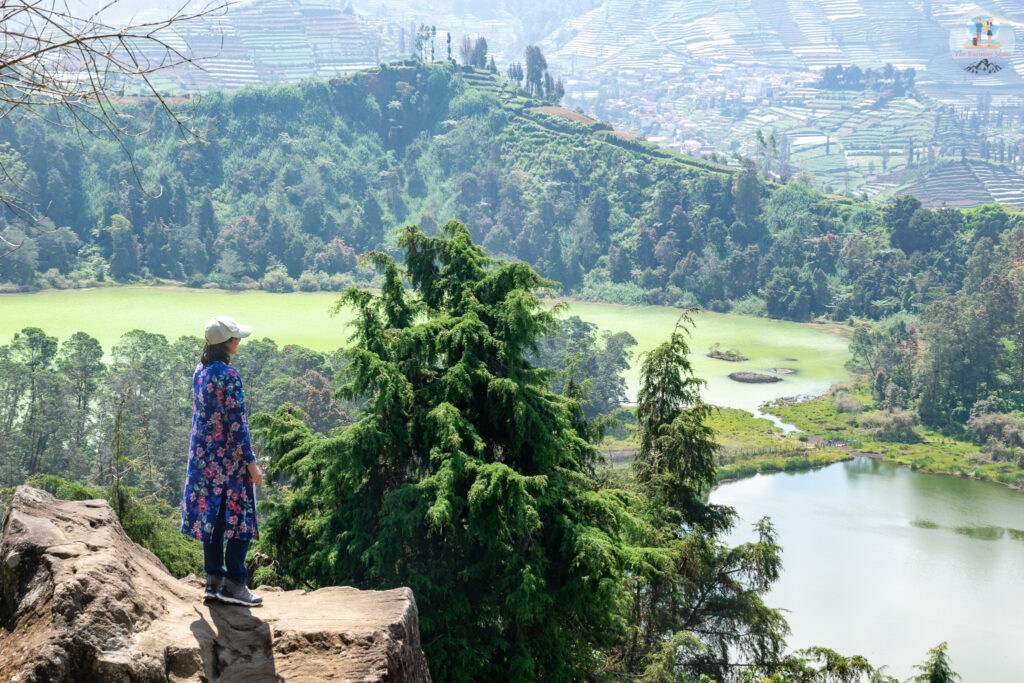
Things to see in Dieng Plateau
Arjuna Temple Complex
Our first stop in Dieng was the Arjuna Temple Complex. You might wonder what sets it apart after seeing the iconic Prambanan and Borobudur temples. However, this complex, featuring some of the oldest Hindu temples in Indonesia, will surprise you not just with its architecture but also with its stunning location.
The temple complex comprises five small temples from the 8th century. Despite being damaged or partially ruined, they stand as lasting symbols of the region’s Hindu heritage and classic Javanese architecture. But what makes this place truly special is its thoughtful positioning amidst the hills and mist-covered surroundings. So visiting early in the morning offers the best experience.
When we visited, a layer of mist hung over the lush landscape, and the temple complex was bathed in the soft light of the morning sun. The entire set up looked absolutely ethereal. We left after a few minutes since the place was bustling with school children that day and we needed to visit other attractions too. In different circumstances though, I would have loved to sit on the lawn for hours, soaking in the unfiltered views.
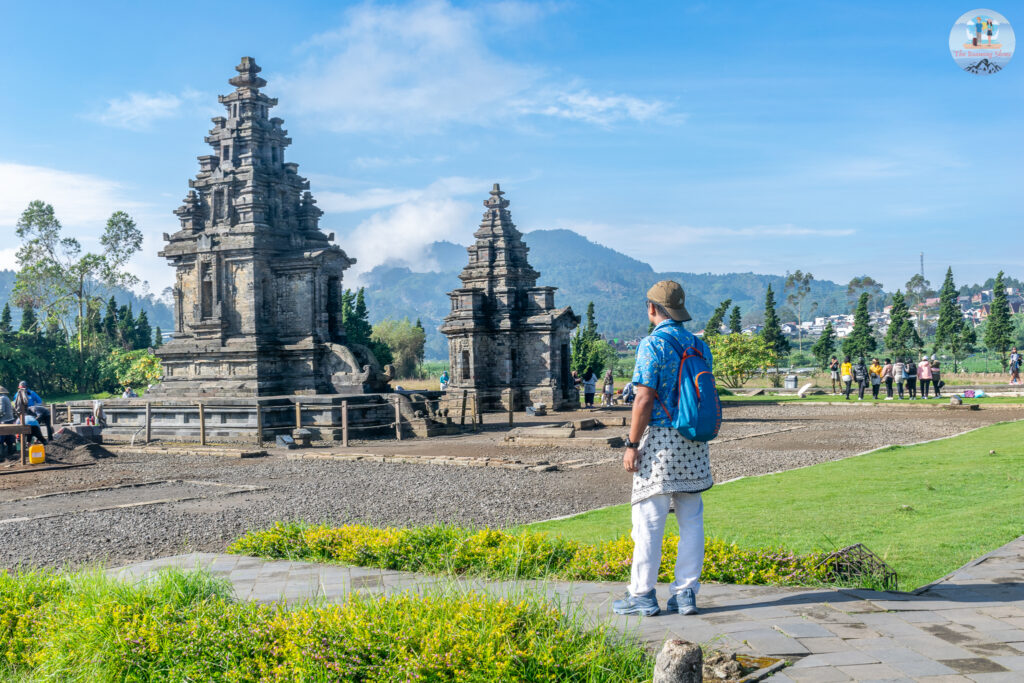
Telaga Warna Lake
Telaga Warna Lake is famous for its vibrant colours, a result of its high Sulphur content, thus earning it the name. We visited the lake after exploring the Arjuna Temple Complex, at around 9 a.m. The lake was wonderfully serene at that time, with no other visitors around—just a few people tending to food stalls by the shore. We moved beyond the stalls to an unobstructed area and were greeted with a dramatic sight.
The lake dazzled under the morning sun, its surface displaying vibrant shades of green. Misty, green-clad mountains cradled the lake, and a flock of small birds fluttered over the water in playful disarray. A tree leaned over the shore, its branches dipping into the lake. The faint smell of Sulphur and the bubbling water reminded us that the lake sat on an active volcanic area. It was peaceful and picturesque, the perfect setting for some soppy pictures 😉 .
Many visitors opt to see Telaga Warna from the viewpoint above rather than visiting the lake up close. This choice is often due to the high entry fees for foreign visitors and the perception that the fees do not match the lake’s offerings. While I can’t speak for others’ experiences, based on our visit, I definitely feel Telaga Warna is a must-see in Dieng.
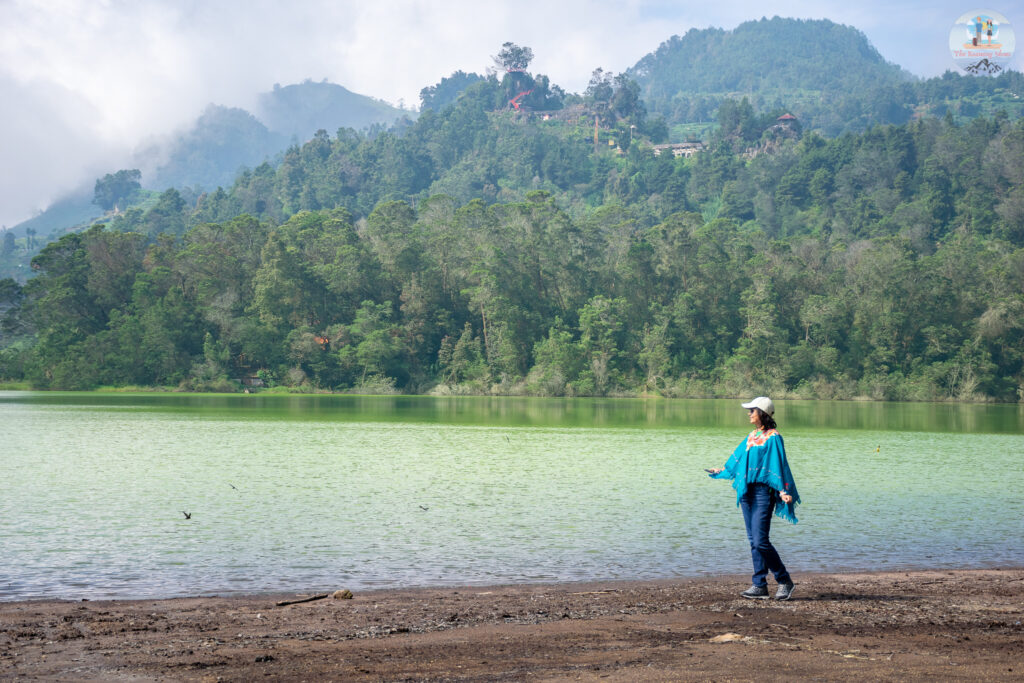

Sikidang Crater
Sikidang crater is unlike anything we had seen before – oddly impressive in its own way. The main attraction of the crater is its bubbling mud pool, with steam constantly rising from it. The mud pool sits on a stark ground scattered with Sulphuric fumaroles that keep emitting white smoke. The whole landscape exudes an End of the World kind of vibe 😀 . Yet, this bare terrain is beautifully framed by lush greenery and rolling hills, creating a striking contrast to the steaming landscape.
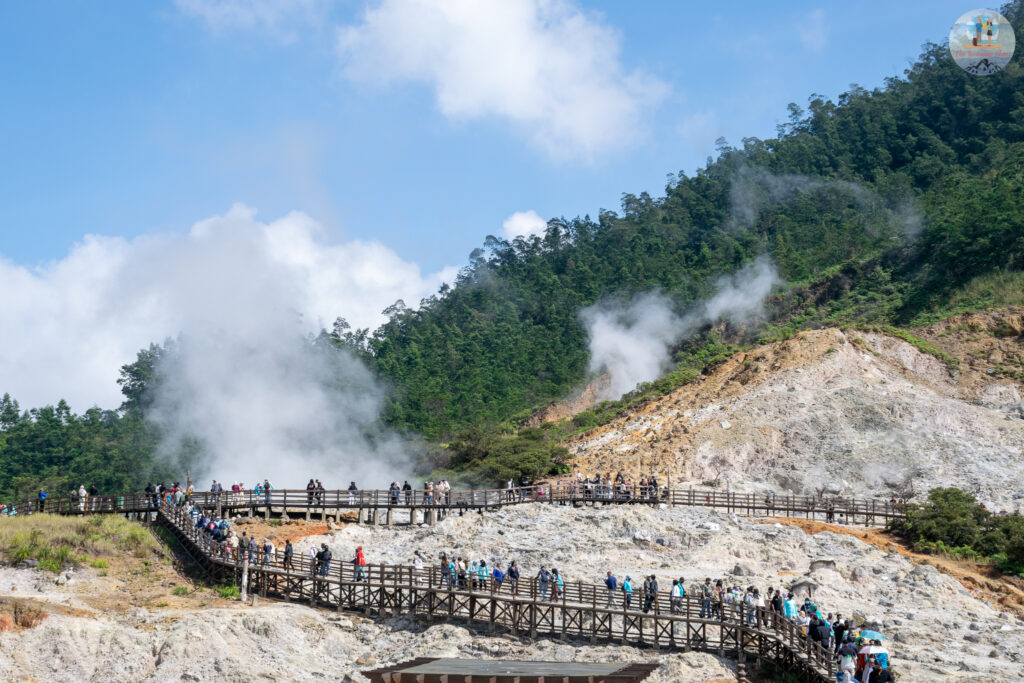
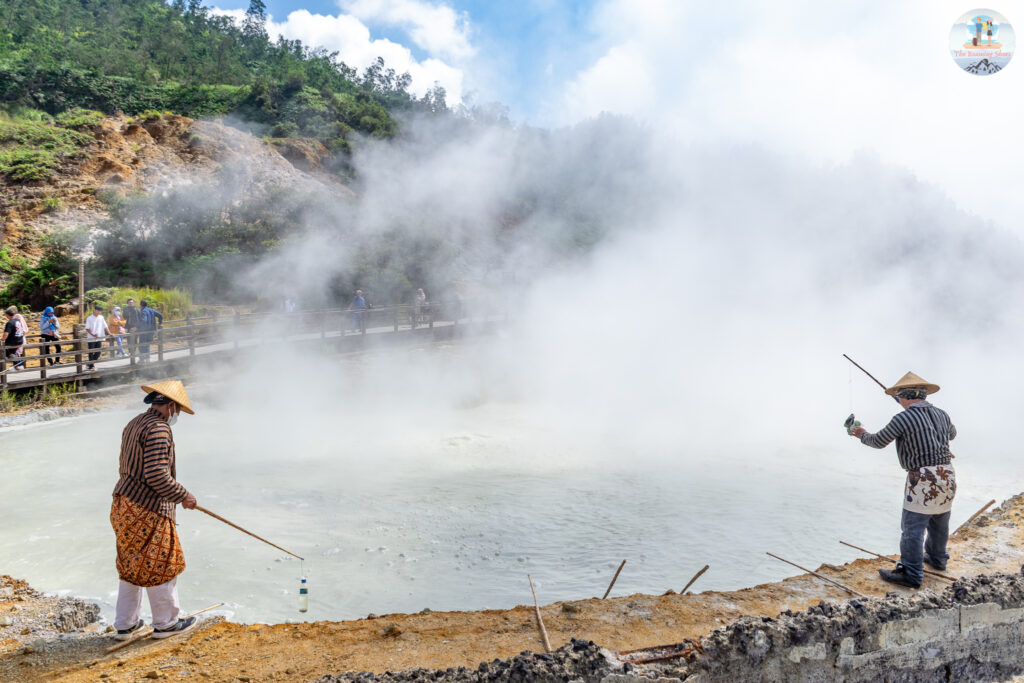
If you already visited East Java, you must have come across Bromo Crater. But Sikidang is quite different as you can see its bubbling mud pool just inches away from behind the barrier. Also, it is easily accessible, just a short walk away from the parking lot.
Oh yes, if you want some great photographs at Sikidang Crater, seek out the local photographers. They may seem shy and reluctant to engage if you speak in English, but they take fantastic pictures. The cost is 10,000 IDR for three pictures, and they’ll send the soft copies directly to your phone.
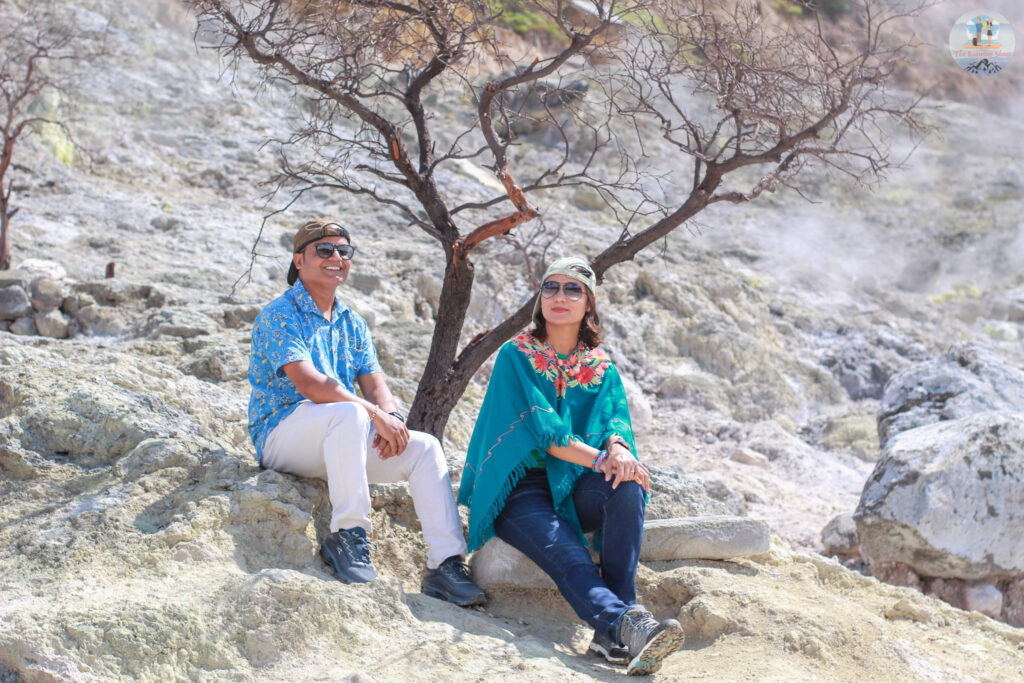
Batu Pandang View Point (aka Batu Pandang Ratapan Angin)
Just a 5-minute drive from Sikidang Crater is my favourite viewpoint in all of Java: Batu Padang. The panoramic views of the surrounding landscape is extraordinary from this point. You can see the twin lakes, lush hills, farmlands as well as the tiny houses scattered amidst the greens. Even the smoke coming out of the Sikidang Crater can be seen at a distance.
The viewpoint is perched on a hill and is easily accessible via a short set of stairs from the parking lot. Though its called Batu Pandang view point, the hill actually features several spots overlooking Dieng Plateau, each offering stunning views and excellent photo opportunities. Among them, the large rock viewpoint seemed to be most popular among visitors with people waiting in queue for their turn. However, since I don’t do well with rocks and heights 😀 , I preferred the highest viewpoint with a wooden platform. It felt safer with railings and also provided unobstructed views of the plateau.
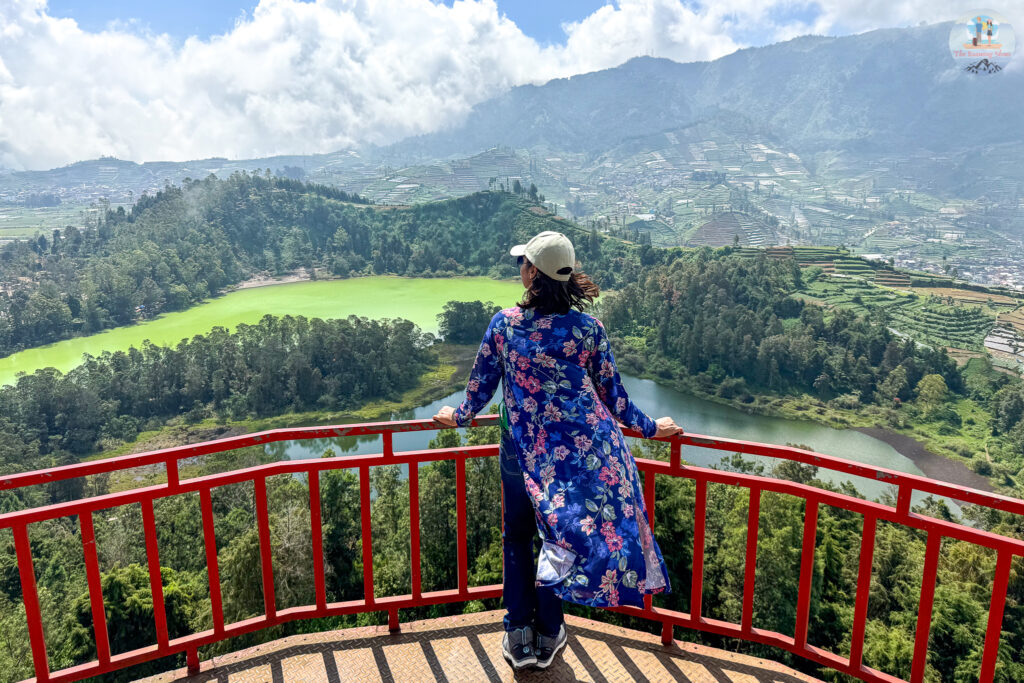
Sikunir Hill Sunrise
If you’re up for an early morning adventure, catching the sunrise from Sikunir Hill in Dieng is well worth it. For that, you’ll need to either stay overnight in Dieng or start very early from Yogyakarta – around 12:30 to 1:00 AM. The hike to the top takes about 30 minutes from the parking area, and once there, you’ll be rewarded with a breathtaking sunrise over Mount Sundoro, one of Java’s active volcanoes.
Dieng Plateau isn’t just about its attractions – it’s the breathtaking scenery that makes it truly special. Every corner feels like a postcard, with lush green hills, misty peaks, sprawling plantations, and picturesque valleys. The beauty surrounds you everywhere you look. So take the time to pause, breathe, and soak in the stunning views.
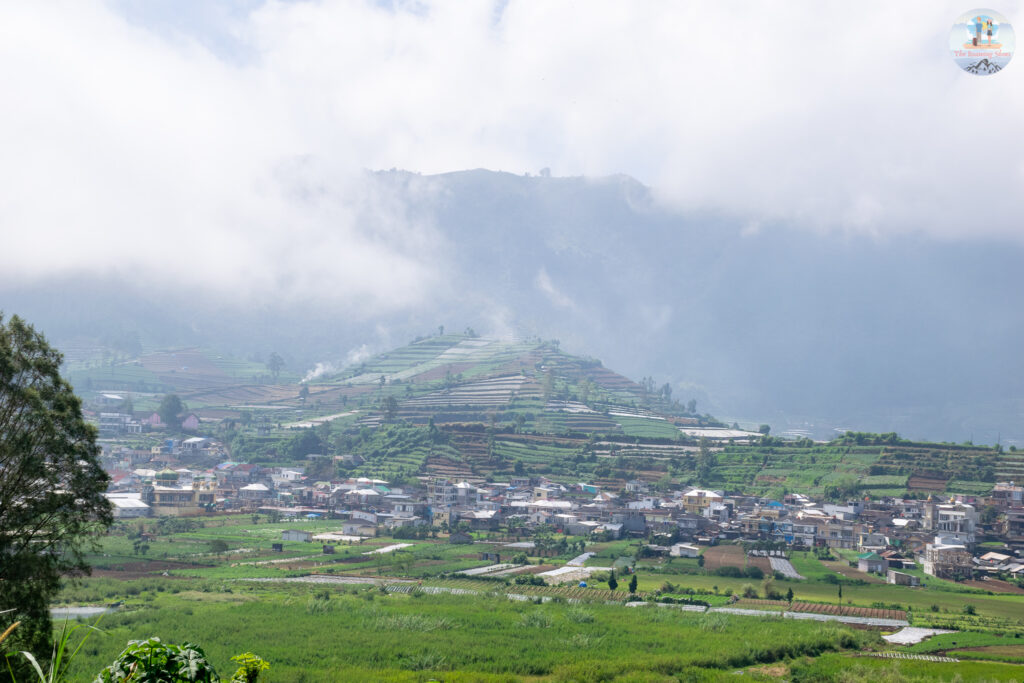
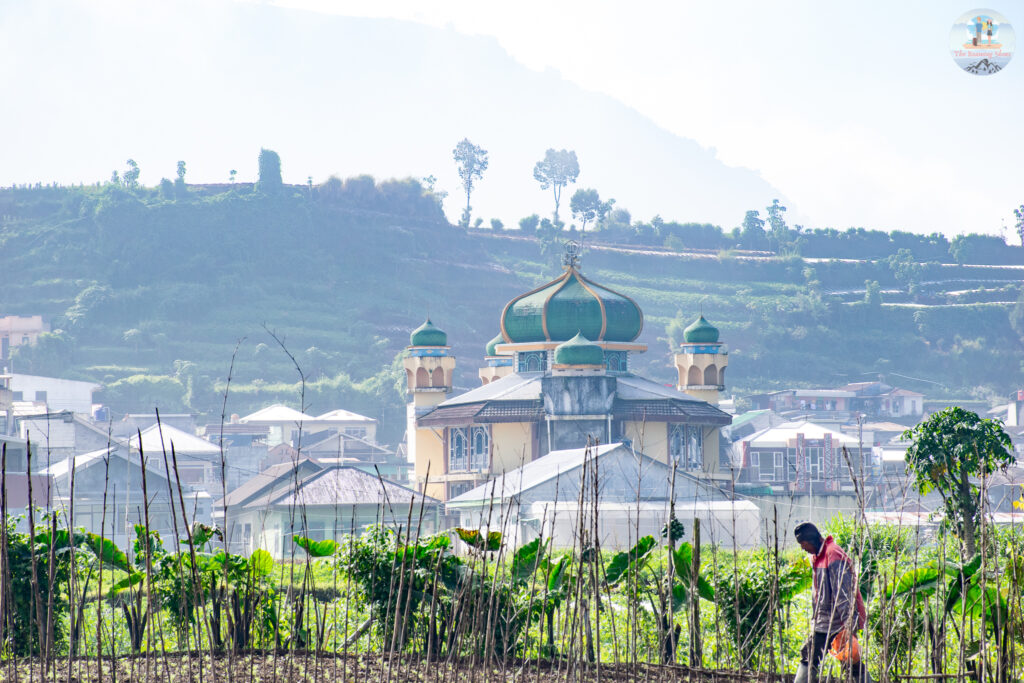
Reaching Dieng Plateau
There is no direct public transport to Dieng Plateau from Yogyakarta. You’ll need to take a bus or train to Wonosobo and then transfer to a local minibus or taxi for the journey from Wonosobo to Dieng. The entire trip takes approximately 4 to 5 hours each way. Unless you plan to stay overnight in Wonosobo or Dieng, I wouldn’t recommend this option.
For day trips, the most ideal option is to rent a car with driver so that you have enough time at the attractions. It takes 2-3 hours to reach Dieng by car depending on traffic. If you’re traveling solo, joining a day tour is the more economical alternative.
Other things to know
- Ideal Visiting Season: The dry season from May to October is the best time to visit Dieng, as the weather is pleasant. However, this is also peak tourist season, so expect larger crowds, especially on weekends.
- Attractions Overview: The major attractions of Dieng Plateau can be explored comfortably in 3 to 4 hours. Most sites are located close to each other, allowing for easy walking between points, even without a car.
- Day Trip or Extended Stay: Dieng Plateau is easily accessible for a day trip from Yogyakarta. However, if you’re interested in exploring the region more thoroughly, there are several accommodation options available in Dieng. Alternatively, you can stay in Wonosobo, a charming and scenic regency located about 30 km from Dieng, which also offers good lodging choices.
- Dress for the Weather: Being a highland area, Dieng can get quite chilly in the mornings. Be sure to pack a lightweight jacket to stay comfortable.
- Local Delicacies: Don’t miss the chance to try Carica (a small papaya unique to this region) and delicious potato snacks, both of which are abundantly grown in Dieng.
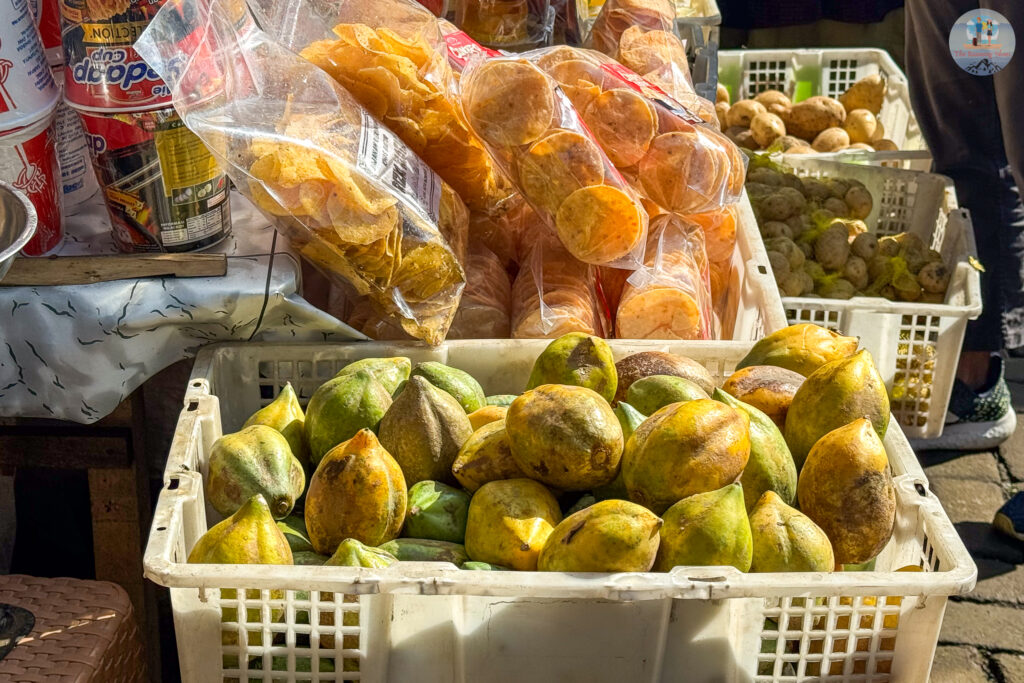
Conclusion
There was a time, Dieng Plateau was considered an offbeat destination, but no more. With more people visiting Java, this region has gained popularity due to its natural beauty and varied offerings. So, if you visit on weekends, you will find tourist buses lined up and people at the popular points. Yet, somehow Dieng has retained its old world charm and I am so glad that we got to chance a visit this beautiful region of Java.
So go ahead and plan your trip to the scenic Dieng Plateau. Hope our blog has tempted the nature lover in you 🙂 .
Check out our other Java blogs:
Experience the magic of Java, Indonesia – Your Ultimate Travel Guide


